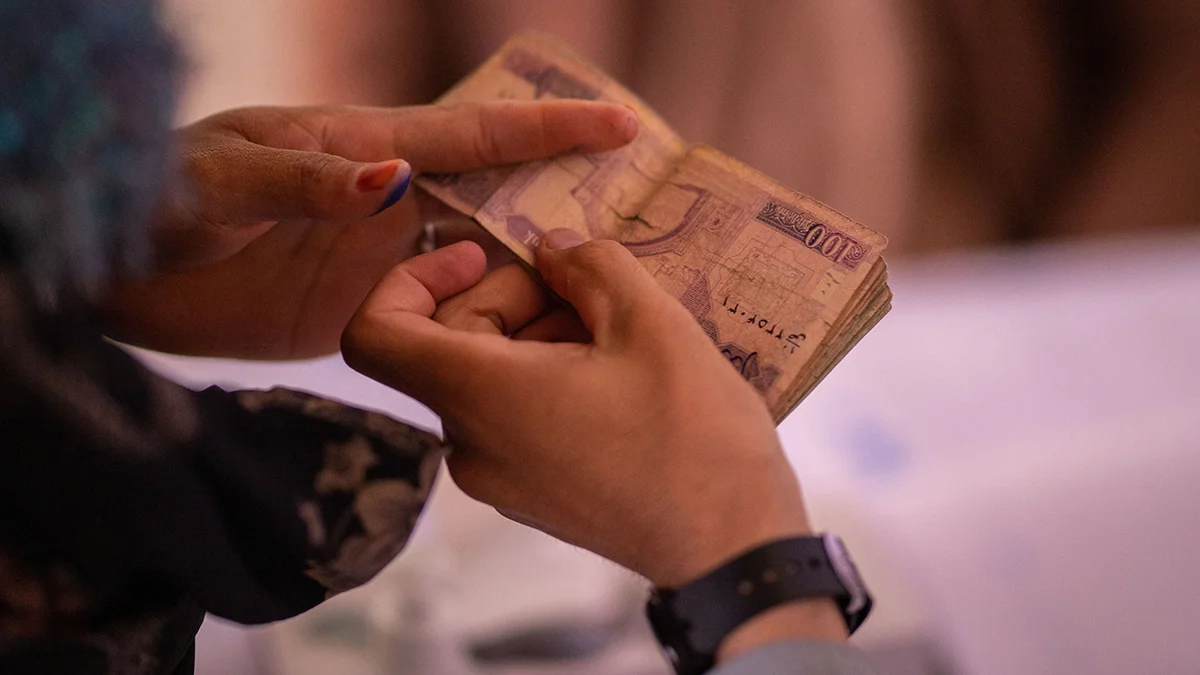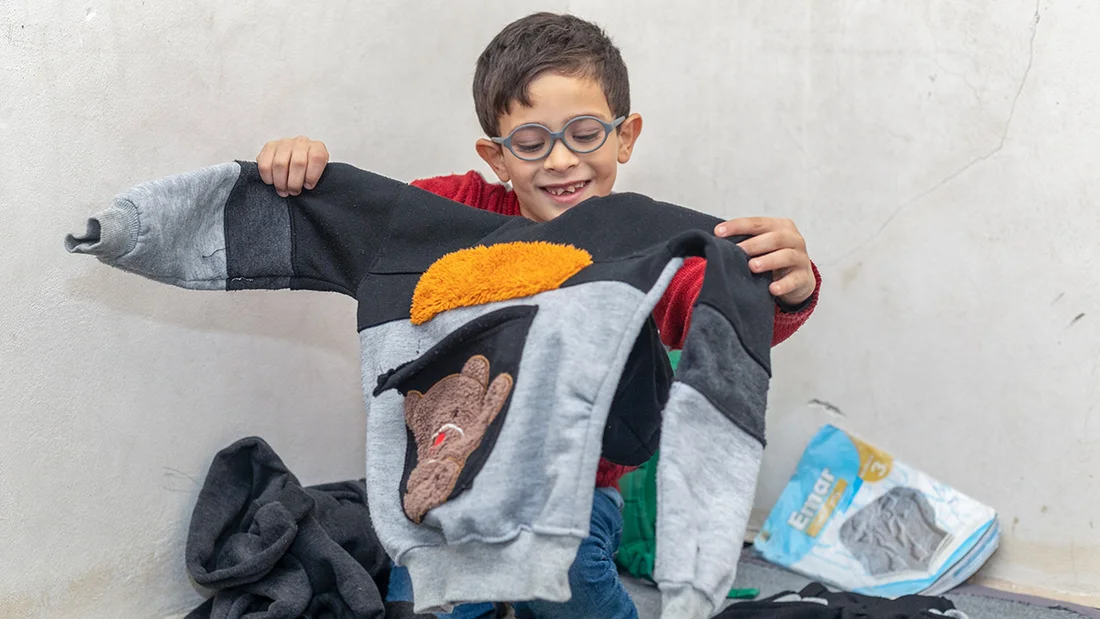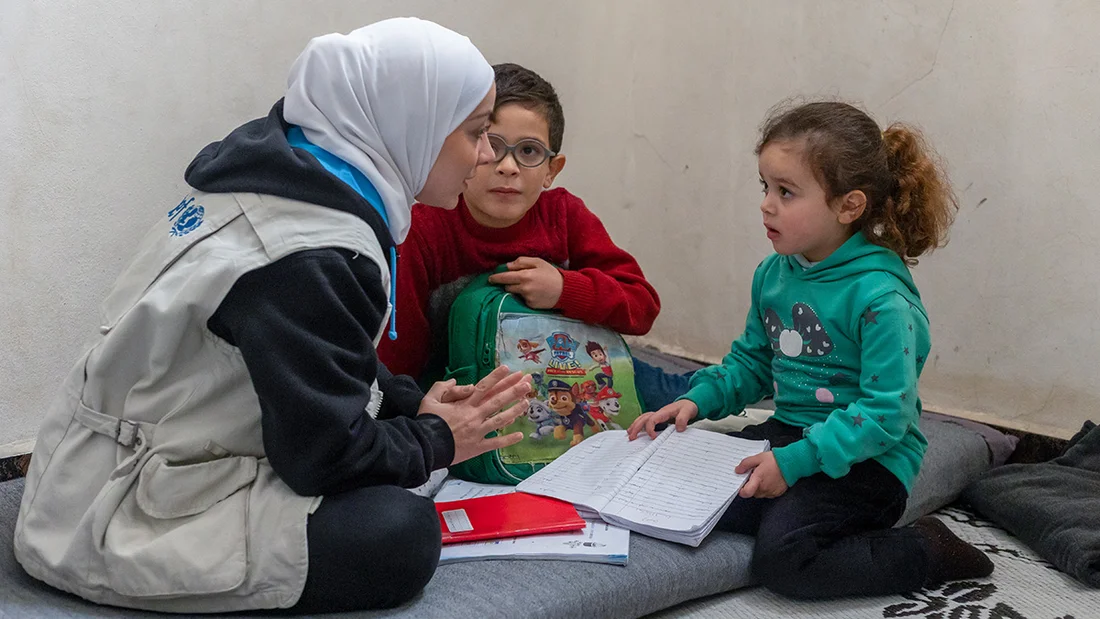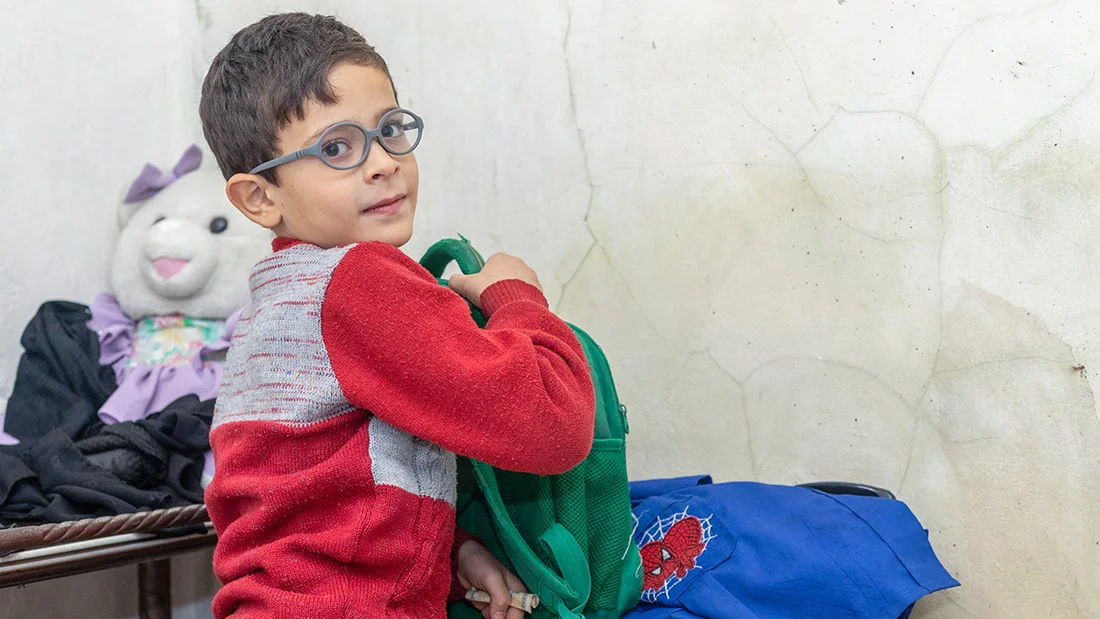In times of constantly growing and escalating crises and emergency situations, rapid assistance is crucial in alleviating suffering. One modality has proven to be particularly effective: humanitarian cash transfers – a direct form of assistance for families and children who need it most urgently.
Why cash transfers?
The impacts of disasters and other emergency situations such as conflicts and wars often leave those affected in deep despair. Therefore, it is crucial to supply the affected population with fast, flexible and, above all, dignified support. The form of assistance plays a decisive role.
In contrast to conventional support, which often consists of standardized and pre-packaged in-kind assistance, cash transfers empower recipients to meet their most immediate needs independently and individually. Depending on their individual needs, they may choose to purchase food, water, or clothing. Likewise, people can pay rent or meet the costs of children’s education or medical care.
UNICEF implements humanitarian cash transfers to complement existing program activities and services. This approach ensures that children’s needs can be met comprehensively across UNICEF’s focus areas.
The crucial aspect lies in the fact that the affected population does not just receive any in-kind assistance; but that the individuality of every person or family and their own priorities and wishes are respected. Cash transfers restore dignity and give control to recipients in situations where these often wane. With cash transfers, those affected can actively care for themselves and their children instead of being looked after. This enhances their self-empowerment and personal responsibility – an essential step in overcoming trauma.

«For me, this money means that me and my three daughters can have a warm tent and enough food in the coming winter»
Cash transfers are an integral element in most humanitarian organizations nowadays. Cash transfers...
- … are preferred by families in need, as confirmed by numerous studies
- … enable families in emergency situations to cover their individual basic needs and access essential goods and services
- ... clearly prioritize the needs and actual requirements of families and children in humanitarian support
- … ensure the dignity and self-empowerment of those affected in crisis situations
- … grant families the freedom to decide for themselves what they and their children need most urgently and respect their decisions
- … can be used flexibly and can improve children’s well-being in various ways
- … allow for fast implementation and, under certain conditions, are more effective and cost-efficient than the provision of emergency supplies that need to be transported to the region – thus, more children can be reached faster
- … serve, compared to the one-time provision of in-kind goods, to strengthen local markets and the local economy in the long-term
Humanitarian organizations and numerous scientific studies agree on the important and indispensable nature of cash transfers as a form of humanitarian assistance. In the past few years, humanitarian organizations have expanded their use significantly, and this trend is expected to continue. Cash transfers are considered one of the most important innovations in humanitarian assistance. In 2022, around 17% of humanitarian assistance worldwide was provided in the form of cash transfers, amounting to around USD 8.1 billion[1].
Cash transfers are not a new approach in UNICEF’s humanitarian assistance. They have served as a crucial and versatile instrument for many years employed in response to conflicts, disasters, and other emergency situations. UNICEF is one of the leading organizations and regards cash transfers as one of the preferred options when considering assistance measures. In recent years, UNICEF has considerably increased the use of humanitarian cash transfers. In 2022, UNICEF reached approximately 2.8 million households across 43 countries, disbursing a total of USD 725 million directly to the affected households[2]. Cash transfers intend to give the affected families the utmost autonomy in their lives.
1 State of the World’s Cash Report 2023: https://www.calpnetwork.org/collection/the-state-of-the-worlds-cash-2023-report/
2 UNICEF, Cash transfers explained: https://www.unicef.org/emergencies/humanitarian-cash-transfers-explained

«Cash assistance is one of the most efficient ways UNICEF can give children and families the dignity and flexibility to meet their urgent needs.»
How do cash transfers work and who receives them?
Humanitarian cash transfers are an extremely effective method of delivering humanitarian assistance to individuals and households, and there are no restrictions on their use by the recipients. Cash transfers may be provided either as a one-time payment or in the form of regular or monthly payments. They can be disbursed through various channels, such as through physical cash, via bank accounts, post offices or even by cellphone.
The decision on who will receive cash transfers and how much is a crucial aspect in the design of these programs, which are tailored to the specific conditions of the situation and the country. Various criteria are used to identify individuals and families in the most urgent need of support. In alignment with its mandate, UNICEF generally provides cash transfers to families with children and infants, pregnant and nursing mothers, as well as families with children with special needs. Once the programs are completed, assessments evaluate as to whether the amount of money provided was adequate and how the families used the funds.
Syria: cash transfers as lifesaving support during winter
When Maysaa and her children returned to their home in Tal Az-Zarazir, Aleppo, after four years, they found it destroyed and empty. They had been forced to leave their home as the war in Syria reached their neighborhood. The majority of their savings were used for repairs and new furniture. The death of her husband a few years ago, together with the loss of his pension and the minimal state support, made it challenging for Maysaa to make ends meet for her family.
UNICEF’s winter assistance in Syria offers unconditional cash transfers to families with children. With this support, they can buy essential items needed for the winter season. Each registered family receives three cash payments. Additionally, social workers support the families and children in accessing crucial services.
Maysaa: «The financial burdens are very heavy, especially as prices of essential items, such as food and fuel, increased. We would have never been able to face the coming winter without this cash assistance.»
With the first payment, Maysaa bought winter clothing for her children. Now, she intends to use the second payment for heating materials during the winter.
Related Links
UNICEF – Cash transfers
https://www.unicef.org/syria/stories/cash-transfers-offer-lifeline-amid-approaching-winter
https://www.unicef.org/emergencies/humanitarian-cash-transfers-explained
https://www.unicef.org/topics/cash-transfers
https://www.unicef-irc.org/publications/1277-cash-transfers-past-present-and-future-evidence-and-lessons-learned-from-the-transfer-project.html
Cash transfers - Global information and 2023 figures
https://www.calpnetwork.org/collection/the-state-of-the-worlds-cash-2023-report/



